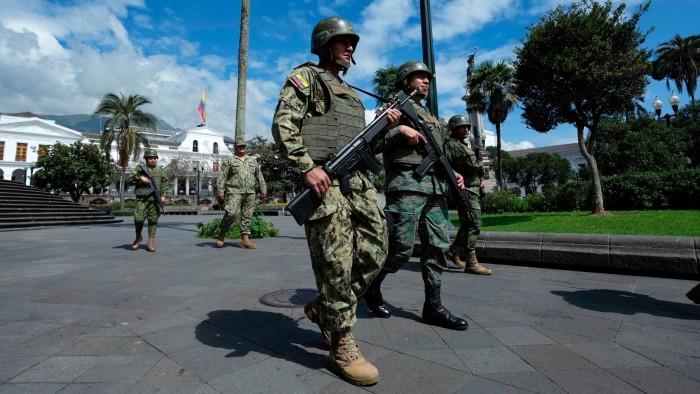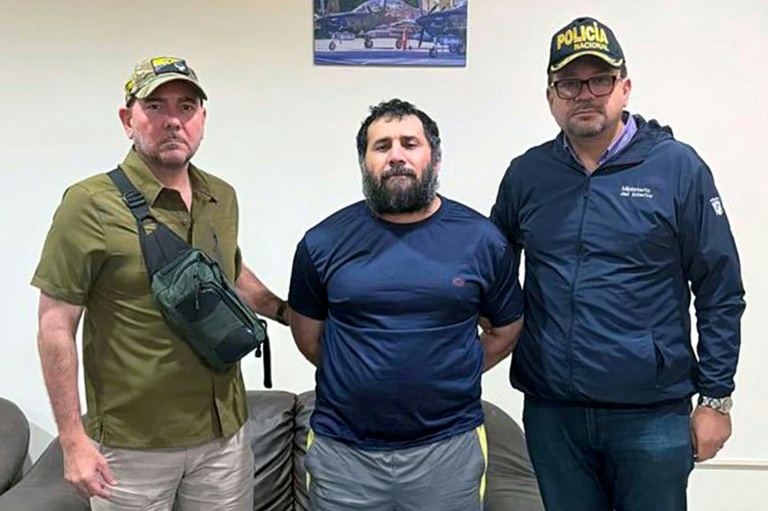# Ecuador’s Drug War: Gang Violence Soars After Fito’s Capture
Ecuador is embroiled in a brutal and escalating drug war, marked by a dramatic increase in gang violence. The recent recapture and subsequent extradition of notorious drug lord Adolfo Macías, alias ‘Fito,’ haven’t quelled the violence – instead, it seems to have intensified. The country is grappling with a surge in homicides and brazen attacks, leaving citizens terrified and questioning the government’s ability to restore order.
## The Rise of Gang Violence in Ecuador
The shocking violence gripping Ecuador is far from a new phenomenon. However, the scale and brutality have reached unprecedented levels in recent months. Multiple mass shootings in public places, including pool halls and cockfighting rings, have shocked the nation and the world. Seven people were killed in a pool hall attack in Santo Domingo in August, followed by another similar massacre in July in General Villamil Playas, leaving at least nine dead. These aren’t isolated incidents. In April, armed men murdered 12 people at a cockfighting ring near Santo Domingo. What’s particularly alarming is the brazen nature of these attacks, often carried out in broad daylight with little regard for public safety. Are these acts of desperation, or meticulously planned territorial disputes?
The latest incident, a suspected gang attack on a pool hall in Santo Domingo on Friday night, resulted in seven deaths and four injuries. Videos circulating on social media depict masked gunmen opening fire on unsuspecting civilians enjoying a game of billiards. The chilling footage underscores the level of impunity enjoyed by these criminal organizations. Police Colonel Beatriz Benavides attributed the violence to territorial disputes between organized crime groups and armed gangs. This points to a deeper systemic issue – the ongoing struggle for control of lucrative drug trafficking routes.
### The Impact on Ecuadorian Society
The rising tide of violence has had a devastating impact on Ecuadorian society. The homicide rate is soaring. Ecuador recorded over 4,600 homicides in the first half of 2025, a staggering 47% increase compared to the same period in 2024. This surge in violence is not limited to specific regions; it’s spreading across the country, instilling fear and uncertainty among citizens. Businesses are impacted, tourism is affected, and the overall sense of security has plummeted. How can the government address this crisis and restore a sense of safety and stability for its citizens?
The government’s response has been met with mixed reactions. While the capture of Fito was hailed as a significant victory in the fight against drug trafficking, the continued violence suggests the problem is far more complex and deeply rooted than a single individual. The question remains: is capturing high-profile drug lords enough to stem the flow of violence, or are more comprehensive strategies required?

## The Role of International Drug Cartels
Ecuador’s strategic location makes it a crucial transit point for cocaine shipments destined for the United States and Europe. This geographic advantage has unfortunately transformed it into a hub for various criminal groups involved in drug trafficking, extortion, and contract killings. Many of these groups have links to powerful cartels based in Mexico, Colombia, and Albania, creating a complex and interwoven web of international criminal activity. The case of Adolfo Macías, alias ‘Fito,’ and his gang, Los Choneros, perfectly illustrates this connection. Los Choneros are not merely a local gang; they’re a significant player in the international drug trade, with established ties to major Mexican cartels. Last year, the U.S. government classified Los Choneros as one of the most violent gangs in the region, highlighting the transnational nature of this problem. This begs the question: how can international cooperation be strengthened to effectively combat these transnational criminal networks?
The extradition of Fito to the United States in July, where he faces a seven-count indictment including charges of international cocaine distribution and weapons smuggling, represents a significant step in disrupting these networks. However, his capture and extradition, while significant, hasn’t been a silver bullet solution. The continued surge in violence suggests that even the removal of a major player doesn’t automatically solve the underlying problems fueling this conflict. What further international collaboration is needed to dismantle these transnational criminal networks?
The situation in Ecuador underscores the urgent need for a multi-pronged approach to combatting the drug trade and gang violence. This includes strengthening law enforcement, investing in community programs to address the root causes of crime, improving judicial efficiency, and enhancing international cooperation to dismantle transnational criminal organizations. The future of Ecuador’s security rests on the effectiveness of these strategies. Failure to address this crisis effectively could have devastating long-term consequences for the country and its citizens. The question is not just about capturing kingpins; it’s about dismantling the entire system that allows these violent organizations to thrive. The fight is far from over!
